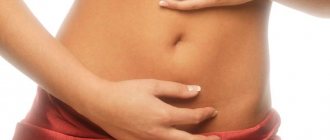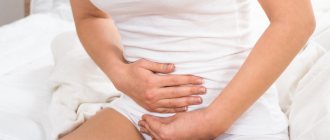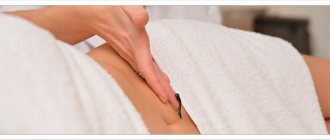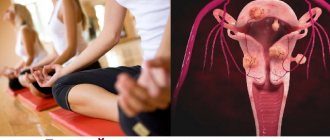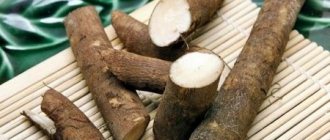Neoplasms in the uterine cavity are diagnosed in almost every 2nd female representative. Mostly these women are over 35 years old. The increase in morbidity is also associated with the lifestyle of today's girls: the birth of the first child is late, pregnancy is often terminated through abortion, uncontrolled use of hormonal drugs, etc. A common and effective method of treatment is leeches for uterine fibroids. Using leeches for a tumor, it is possible to reduce the expression of numerous symptoms and normalize well-being for a long time.
The essence of the method
Leech therapy dates back to ancient times. At a certain period, this method of treatment was almost never used by anyone, but in recent years it has become increasingly popular. The healing properties of leeches began to be used again.
Is hirudotherapy dangerous and where do you get leeches?
There are about 400 varieties of leeches, but only one special type is used in medicine for therapeutic purposes - the medical type. This species belongs to the classification of annelids. Today, the effect of medicinal leeches on humans is completely safe. This is determined by certain conditions:
- For therapeutic purposes, leeches that are specially grown in large quantities are used. Throughout the entire period, the leeches are fed blood from young bulls. Before being used to treat humans, leeches undergo prolonged fasting. As a result, the leech’s gastric tract will be clean, for this reason the risk of infection will be zero.
- All diagnostic centers use leeches only once. After use, they are placed in a chloramine solution, in which they immediately die. In certain variations, leeches can be used multiple times, but only on one person.
- Before using leeches as a method of therapy, it is necessary to undergo an examination by a specialist. Certain somatic diseases and hereditary disorders are considered direct contraindications for this treatment.
Place for placing leeches
It is preferable that the entire treatment process is carried out by a specialist hirudotherapist. All doctors have their own technology and scheme for placing leeches. For this purpose, either active points or localization of vascular plexuses can be used. In the 1st option, the placement coincides with acupuncture and acupuncture techniques.
The key components secreted by the leech during blood sucking determine the healing effect:
- Hirudin - affects parts of the circulatory system, stopping the process of formation of blood clots.
- Hyaluronidase – normalizes the absorption of medical substances, which are often used in combination therapy.
- Histamine-like elements have an effect on the inflammatory process, activating auxiliary and active components. This way they eliminate pathology.
- Bdellins and engins exhibit an effect on the general immune forces of the body.
- The destabilase complex reduces the possibility of blood clots by reducing the ability of red blood cells to stick together.
- Neurotrophic conditions help nerve endings to grow.
When placing leeches on the area of the vascular plexuses, the specialist selects those places that are most closely associated with the unhealthy organ. For example, treatment with leeches for fibroids in certain cases may involve their placement in the area of the vaginal vault near the uterine cervix.
When treating fibroids, the most effective placement of leeches will be their placement within the vaginal environment. Usually, they are placed on the points of the cervix of the left and right fornix. But, the localization of their placement may vary depending on the area where the nodes are located. The placement of leeches should take into account the individual characteristics of each woman’s body.
Hirudotherapy should be carried out with mandatory control of hormonal levels in the uterus itself. It is more correct if you are under the supervision of a gynecologist during this treatment.
Treatment of fibroids with leeches is a fairly effective method. Hirudotherapy has almost no contraindications and improves the condition of blood vessels and blood quality. It is necessary to take into account the fact that such treatment is auxiliary to the main one and it is more correct to combine it with other methods of treatment.
Silalubvi//
E.I.Minginovich Candidate of Medical Sciences, Herbalist
Situations often arise when, after another examination by a gynecologist or an ultrasound examination of the pelvic organs, a woman goes home with a new diagnosis - uterine fibroids. The eternal questions immediately arise: what to do and what to do? Do you need to panic, is it possible to live peacefully with this disease, or, conversely, should you immediately run to the surgeons to get rid of this problem once and for all? But let's not get ahead of ourselves, let's discuss everything in order. What are uterine fibroids?
Uterine fibroids, also known as fibroids, are benign hormone-dependent tumors of the uterus. It is benign because it does not contain elements characteristic of cancerous tumors (it becomes malignant extremely rarely and grows slowly). Hormone-dependent, that is, increasing in size under the influence of female sex hormones - estrogens. Thus, this disease is typical for women of reproductive age (from 16 to 45 years). After the cessation of menstruation, the tumor undergoes reverse development, decreases in size until it disappears completely.
Why and who gets this disease? The reason why fibroids arise and begin to grow is still unknown. Hyperestrogenism – an increased content of estrogens (female sex hormones) in the blood – is of definite and important importance. This happens when there is an imbalance in the endocrine system of the body, when there is simply an increase in the synthesis of these hormones, when there is insufficient production of progesterone in the woman’s body - a hormone that neutralizes the effect of estrogens, and with increased sensitivity of receptors to estrogens.
Also, a high concentration of hormones in the blood is observed in liver diseases, because it is there that all hormones must be destroyed.
As a rule, in patients with uterine fibroids, a similar disease occurs in most relatives, that is, the hereditary factor also plays an important role in the development of this disease.
When collecting anamnesis, it turns out that many patients with uterine fibroids were often ill in childhood, which could not but affect the development of the reproductive system. They have problems with the gastrointestinal tract (gastritis, cholecystitis, past hepatitis, etc.), and the metabolism of hormones is disrupted and their destruction occurs. Spontaneous or induced abortions, complicated pregnancy and childbirth also lead to disruption of the receptor apparatus of the uterus.
Initially, the tumor arises intermuscularly, then, depending on the direction of growth, intramural (in the thickness of the uterine wall), submucosal (growing towards the endometrium) and subserous (growing towards the abdominal cavity) nodes develop. It must be remembered that fibroids are always multiple tumors. Even if at a certain stage only 1 - 2 fibroid nodes are detected, without appropriate treatment, sooner or later other nodes will appear.
Clinical manifestations and, accordingly, complaints from patients depend on the nature of the growth of myomatous nodes, the age of the patient, the duration of the existence of fibroids, and concomitant general and gynecological diseases.
With intermuscular localization, when the tumor is small and grows only in the thickness of the muscular wall of the uterus, there may be no complaints, or patients may notice a constant dull, nagging pain in the lower abdomen.
The submucosal growth of fibroids, when it protrudes into the uterine cavity, is characterized by painful, prolonged, heavy menstruation. This happens, firstly, because the fibroid node interferes with the contraction of the uterus, thereby increasing the bleeding time, and secondly, the uterus tries to get rid of this node, and the pain is cramping in nature. As a result, hemoglobin levels may sharply decrease and anemia develops. Reproductive function also usually suffers: a woman either cannot become pregnant, or spontaneous miscarriage or premature birth occurs.
With subperitoneal growth of fibroids, in addition to pain in the lower abdomen, dysfunction of the organs adjacent to the uterus - the bladder and intestines - may appear. So, if a subperitoneal fibroid grows from the anterior wall of the uterus, it can compress the bladder. This will manifest itself as increased urination. When a fibroid node grows from the back wall, intestinal function will suffer: constipation or, conversely, a frequent urge to defecate is possible.
In addition, tumors of any location are characterized by a deterioration in the general condition: nervousness, which is associated with constant, increasing pain and anemia (decreased hemoglobin levels). Characterized by engorgement of the mammary glands and other symptoms that are not directly related to the presence of fibroids, but arise due to increased levels of estrogen.
How can you diagnose uterine fibroids? A routine gynecological examination reveals an enlarged uterus. Doctors agreed to measure the size of the affected uterine fibroids in weeks of pregnancy of the corresponding period. To clarify the localization of fibroid nodes and determine their shape and size, an ultrasound examination (ultrasound) is performed. Using this research method, it is possible to determine the number, size and preferential growth of the tumor. If submucosal localization is suspected, hysteroscopy, that is, examination of the uterine cavity using a special optical system, or hysterosalpingography, an x-ray of the uterus filled with a contrast agent, can help to clarify the diagnosis.
Subperitoneal fibroids can be detected by laparoscopy.
After clarifying the diagnosis, the doctor chooses a management strategy for the patient. Treatment can be surgical or conservative. The choice of treatment method depends on the patient’s age, the size of the tumor, the predominant location of the nodes, and the general condition of the patient.
Today we will talk about a conservative method of treatment using medicinal herbs and medicinal leeches. It should be noted that fibroids up to 7-8 weeks in size are almost one hundred percent treatable with these methods. Myomas that are large in size (up to 12 weeks) can also be corrected - in the form of reducing their size and stopping further tumor growth. Fibroids that have reached 12 weeks or more in size must be operated on. Also, indications for surgical treatment include rapidly growing tumors - this is clarified during dynamic observation; fibroids with submucosal localization of nodes.
Surgical treatment is indicated for patients with severe anemia due to heavy menstruation and significant dysfunction of the bladder and intestines caused by fibroids.
An important component of therapy is diet - a strictly balanced diet and eating regimen. The diet must include sunflower, corn, soybean, and olive oils containing unsaturated fatty acids and vitamins that ensure the breakdown of cholesterol. Patients with uterine fibroids are recommended to periodically take freshly squeezed vegetable and fruit juices.
Nonspecific antitumor plants are used. The term nonspecific refers to antitumor plants that are aimed at destroying the tumor, regardless of its location. In other words, these plants are prescribed for any tumors, including uterine fibroids. This category includes plants such as Dzungarian and Baikal fighters, speckled hemlock, marsh cinquefoil, white mistletoe, and red fly agaric. In most cases, alcohol (vodka) extracts from the listed plants are used. Dosage dropwise depending on the type of herb.
As you can see, almost all of these plants (with the exception of cinquefoil) are poisonous. The use of such herbs should be extremely careful. Another type of antitumor herbs that are used in the treatment of fibroids are called queen cells. Among such plants, it is necessary to mention the common horehound, ortilia lopsided, European grasshopper and some others. These herbs are non-toxic and specifically act on uterine tumors.
Another group of antitumor plants used for uterine fibroids are regulators of connective tissue trophism: knotweed (knotweed), horsetail, lungwort.
The use of immunomodulators and adaptogens is becoming increasingly relevant. These are: Eleutherococcus senticosus, Rhodiola rosea and tetrapartite, Leuzea safroliformes, Aralia Manchurian, pennywort and so on.
Be sure to pay attention to the regulation of the menstrual cycle (if any) in treatment. If menstruation is delayed, give tincture of aristolochia, a decoction of tansy flowers; for painful periods, give mantle, chamomile, and common hops. During early menstruation – ordinary lumbago (sleep-grass). For menstruation accompanied by edema, fragrant woodruff helps, for an atonic uterus - field clove, oregano. For heavy menstruation, plants that have long been firmly established in gynecological and obstetric practice are used: stinging nettle, shepherd's purse, yarrow, Amur barberry.
Complex herbal medicine of the uterus also includes local treatment, which aims to enhance the effect of herbs prescribed internally. Methods of implementation can be different: douching, tampons, poultices and others. Depending on what effect is to be achieved, plants are selected. For example, for an antitumor effect, douching with a decoction of the root of horse sorrel or tenacious bedstraw is done, and chamomile is used to reduce pain. Poultices are used externally, applying them to the lower abdomen.
The basis of the poultice is any substance that retains heat for a long time and does not interfere with the absorption of the medicinal substance. It is common among people to use baked onions, undercooked pearl barley porridge, hominy (corn porridge), decoctions of mucus-containing plants - flax seeds, marshmallow root, wild mallow, mallow, warm infusion of Icelandic Cetraria thallus and others as a base. Tinctures and decoctions of medicinal plants, such as sweet clover, black root, common bruise and others, are added to the finished poultice base.
To prepare tampons, the same medicinal plants are used in the form of decoction, ointments and oils.
In conclusion, I would like to say a few words about hirudotherapy (treatment with medicinal leeches) for uterine fibroids. This method is an auxiliary, but very important factor in the treatment of uterine fibroids. During tumor processes in the uterus, congestion occurs in the pelvic vessels. It is a predecessor in the form of a diagnosis: pelvic varicose veins. Leeches are able to eliminate such stagnation, improve blood circulation in the pelvis, and also have an antitumor effect. It has been proven that enzymes from the salivary glands of leeches are able to level out a woman’s hormonal imbalance, which is extremely important when hyperestrogenism occurs.
Every woman with uterine fibroids is subject to clinical observation every 3-6 months, and must undergo an ultrasound examination (ultrasound) 1-2 times a year to assess the dynamics of tumor growth.
In any case, the sooner the diagnosis is made and appropriate treatment is started, the less undesirable consequences there will be, which is especially important for women of reproductive age.
Features of treatment
During the procedure, leeches are placed on the human skin or membrane, usually 3-10 pieces. For the purpose of therapy, only hungry leeches that have not eaten for more than 4 months are used. Immediately after such a period, there is no more blood in their gastric tract from the previous sucking. In this state, they intensively search in order to suck out fresh blood. Any individual pierces human skin up to 1-2 mm and consumes about 5-20 ml of blood until completely saturated. Typically, the procedure lasts approximately half an hour.
For the first time, a few leeches are used and the overall period of their use is reduced to a minimum. This is required for the reason to understand whether a given session is safe for this particular person. After the process is completed, the individual either suctions itself, or the doctor will do it using simple methods: a cotton swab in iodine or alcohol will scare off the leech, and it will release the skin. If she is completely satisfied, she will carefully slide down on her own.
After a bite, a small wound remains on the skin, which can still bleed for a certain period. There is no danger in this; you just need to adhere to simple hygiene principles. In some people, the bite area may take on a swollen appearance for 2-3 days, but then it goes away on its own without any complications.
Where to put
When undergoing treatment with leeches, it is important to know certain rules and strictly adhere to them. One of the frequently asked questions is: “Where should I put leeches for fibroids?” Much depends on the precise implementation of the step-by-step process of the course, since there is a possibility that if the placement is incorrect and other factors can even harm the patient.
The average duration of such a course is about 10 sessions - 2-3 procedures per week. The number of leeches used is from 3 to 10 pieces. In most cases, they are applied to the abdomen and abdominal cavity. After the end of each session, blood continues to ooze, usually for 24 hours. Therefore, the hirudotherapist applies sterile dressings to the places where leeches are applied in order to avoid unwanted inflammatory processes and infection.
The effect of leeches on the body
Leeches exhibit a significant therapeutic effect on the human body, including the treatment of fibroids with the help of leeches.
Firstly, any leech sucks a certain amount of blood, then a small part will leave through the wound left by the leech. This activates mechanisms in the body that enhance blood circulation and the synthesis of various components.
Secondly, leeches are often placed at the same points as acupuncture is performed. The healing effect in this case will be similar to acupuncture, except for the key purpose.
Thirdly, while sucking blood, the leech releases approximately 300 active elements into the bloodstream, the key of which is considered to be hirudin. Until now, drug laboratories have not been able to completely replicate the structure of the secretion. This makes treatment with leeches still relevant today.
Treatment of uterine fibroids with leeches: benefit or harm
In the absence of contraindications and correctly performed, treatment of uterine fibroids with leeches brings invaluable benefits to the body. In terms of effectiveness, it can be compared with acupuncture - an ancient acupuncture healing technique. The saliva of parasites contains chemical components that thin the blood and have an analgesic effect. Thanks to this, patients do not feel discomfort during manipulation.
Medical leeches are grown in a laboratory. They are sterile, which eliminates the introduction of infection with the subsequent development of infectious and inflammatory diseases. Leeches are placed at acupuncture points, the irritation of which stimulates the activity of certain internal organs.
Contraindications
Before using the leech treatment method, you must consult with a specialist. Only a doctor will be able to assess all the characteristics of the body and determine the need for using this technique.
However, this method has contraindications, including:
- Anemia is a decrease in hemoglobin and iron, especially if the prerequisites for such a condition have not yet been diagnosed.
- Condition after protracted and complex illnesses and during exhaustion. Blood loss can worsen the patient's well-being.
- Hemolysis of various origins.
- Allergy to leeches and their enzymes. Directly in order to eliminate this condition, the first procedure of treatment with leeches should last only 10 minutes and use 2-3 individuals.
- Infection with tuberculosis bacillus.
- Tumors of a malignant nature.
- Pregnancy period.
Will it help with fibroids?
It is unlikely to permanently cure a benign neoplasm of the uterus using only leeches, but it is possible to significantly reduce the expression of certain disorders.
For what reasons:
- By influencing reflexogenic areas, these small creatures can reduce the growth of nodes on the uterus, and in certain situations even reduce their volume.
- Changes in the rheological qualities of the blood help to correct problems with excessive clots during menstrual days, which many can compare to liver lumps. In addition, there is a reduction in the total volume of menstrual blood.
- Metabolism at the cellular level improves, which is considered to prevent pathologies of node nutrition, and this condition poses a danger to a woman’s well-being.
- Almost all women focus on the fact that pain decreases before and during menstruation.
- Treatment with leeches regulates the process of growth of the endometrium and stops hyperplasia and the formation of polyps.
- Procedures using hirudotherapy help combat varicose veins in the pelvic area, which can often complicate fibroids and other diseases.
For fibroids, treatment with leeches should be combined with other methods. In this case, there will be more benefits.
Features of hirudotherapy
When using leeches for a benign tumor, the placement site is determined exclusively by a specialist. For truly effective therapy, some doctors advise placing them inside the vagina on the mucous membranes. Suction, as a rule, occurs in the area of the cervix and uterine vaults.
Treatment with leeches is a fairly effective method of treating a variety of gynecological diseases, including uterine fibroids. It is simply impossible to eliminate the disease and completely recover from this pathology solely with leeches in most situations, but it is very possible to alleviate the course of the disease and relieve symptoms, especially when combined with drug therapy.
Treatment of uterine fibroids with leeches: active points
In fact, treating uterine fibroids with leeches is a complex manipulation that requires certain knowledge and skills. Leeches are attached to the body in the inguinal, perianal, pubic, and sacral areas.
It is advisable that the installation be carried out by a medical professional - he will be able to attach the leeches to the right places. Leeches should not be allowed to bite through blood vessels - this will lead to severe bleeding. Therefore, you should not self-medicate.
Reviews from doctors
Many experts advise their patients to use hirudotherapy as an auxiliary treatment that will help get rid of the signs of the disease in a shorter time.
Daria Shirokova, gynecologist:
For fibroids, hirudotherapy can be very useful because leeches suck blood from the affected areas. Due to this, the nutrition of the nodes in the uterus stops, and they can decrease in volume. I recommend hirudotherapy to my patients only with their consent, since many may not like the procedure. First, I’ll definitely do a reaction test. I have noted that treatment with medications in combination with hirudotherapy gives positive results much faster.
